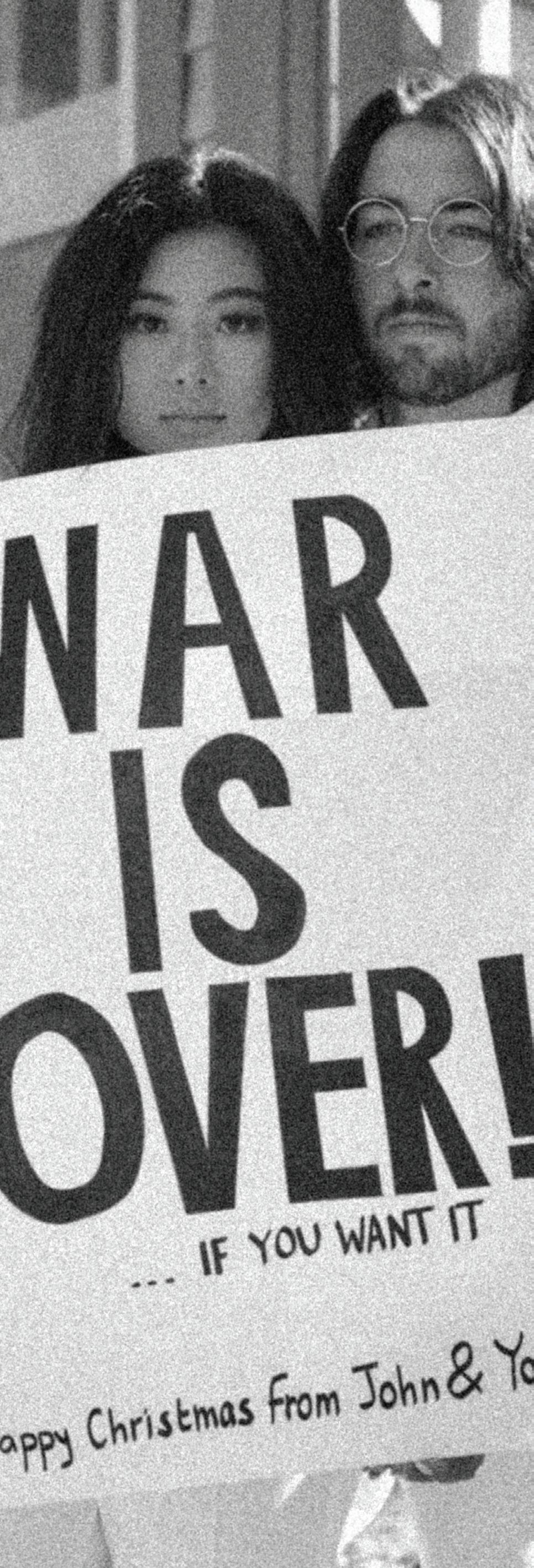
4 minute read
What Happened to The Protest Anthem?
MUSE MAGAZINE
What Happened to The Protest Anthem?
Advertisement

By Ben Dinsdale A few weeks ago, my bandmates and I had our first encounter with a “real person” from the music industry. The manager had come to one of our shows and liked what he saw, so he decided to schedule a meeting with us and discuss where we were going and how we planned to get there. As you could imagine, he asked questions about how we practice, what our writing process was, and how we book gigs; typical questions to get a feel for a band. The conversation then pivoted towards our social media presence—or lack therefore—and when recommending ways that we could get more people engaged on our platforms, he asked us why we weren’t “political”. “Every band is political nowadays; you have to have something to say.” As someone who has always appreciated political music and protest songs, I was a little taken aback. We didn’t even talk about politics with each other, wouldn’t it seem kind of disingenuous if we were promoting a message just to have a message rather than we actually believing in it? There is a long and storied history of music’s role with politics. Although their history goes back hundreds of years, the earliest protest songs as we know them go back to Woody Guthrie’s “This Land is Your Land” and Billie Holiday’s “Strange Fruit”. The genre came to the forefront in the 1960s with the anti-war movement and the emergence of great musical poets like Bob Dylan, Joan Baez, Bob Marley, and Pete Seeger. Songs like “Ohio”, “What’s Going On?”, “The Times They are A Changing”, and “Born in the USA” advanced the art form in the 1960s, 70s, and 80s. Bands such as Rage Against the Machine, Green Day, and Public Enemy continued to rail against that power that be in the early 2000s, but in a much more aggressive way than their predecessors, and without the same poetry and class. It seemed for a while that protest music had lost its place, with the pop charts being filled with boybands and bland pop artists.
ISSUE XIX But in recent years, protest music has seen a revival. With the social upheaval in the last five or so years seeming to approach the levels of the 1960s, band and artists have begun to incorporate their political messages into their music. Kendrick Lamar’s 2015 album To Pimp a Butterfly created two huge mainstream hits with deeply political messages. “Alright”, preaching that although the world around us seems chaotic, people will be able to get through it, became an anthem of the Black Lives Matter movement. The political allegories in “King Kunta” are constant and varied, but begin with the homage to Kunta Kinte, a character in Alex Haley’s Pulitzer Prize winning novel Roots: The Saga of an American Family, about the life of a man born in Gambia but captured by slave traders and brought to America. Childish Gambino’s “This is America” is probably the most popular protest song in recent memory. The brilliance of this song and its accompanying music video is plentiful enough to take up a full article. However, its real power lies in its ability to be great to listen to, with a memorable refrain and fascinatingly complex production, while having an equally complex message that made you want to watch or listen again until you truly understood what the song was saying. Outside of rap, songs like Hozier’s “Take Me to Church” have also continued the protest song tradition. Yet the real change that has occurred from the protest music of the 60s, 70s, and 80s to today is the transition from chart topping singles that have deep political meaning, to artists who embrace politics and their unique perspectives in all of their work. Although many artists may not be specifically writing about it in their music, we have a seen an opening up of the musical tent for different voices, all who channel the changes around them. LGBTQ+ artists like Sam Smith, Lil Nas X, Tegan and Sara, and Frank Ocean have explained how their sexuality influences their music and write songs that speak to members of that community, but aren’t protest songs against the forces who limit them. Kesha and Courtney Barnett have written songs heavily influenced by the Me Too movement, and Lizzo and Jessie J have embraced positivity and self-love in all of their work. The real transition we have seen is that in our social media and never-ending news-cycle era, politics have become a part of everything that we do. Just as the manager said to us, every artist now seems to have something to say, and has embedded their messages subtly in their music. Some have continued to produce songs speaking directly to big political issues, but the emergence of new voices has created music that incorporates the realities of this politicized culture into their music. This has created beautiful, often deeply emotional tunes that may not be protest songs in a traditional sense, but nevertheless challenge the status quo, and encourage us all to think a little deeper. PHOTOGRAPHY BY NICOLETTE SCHWARZMAN











